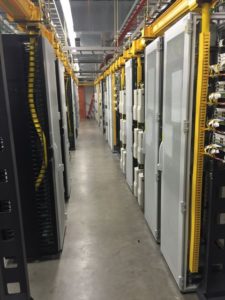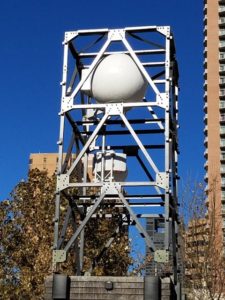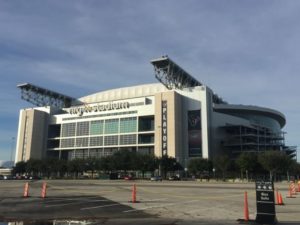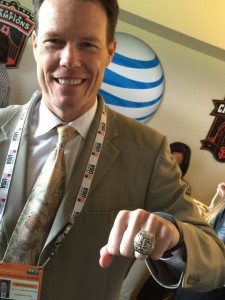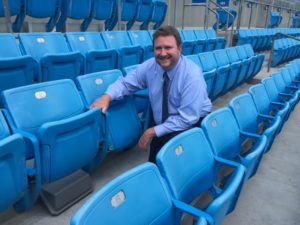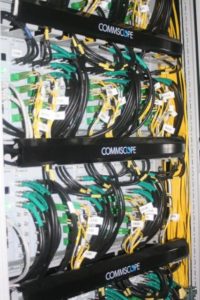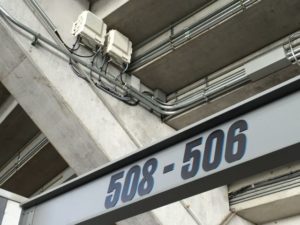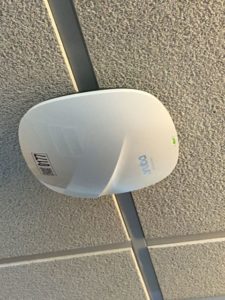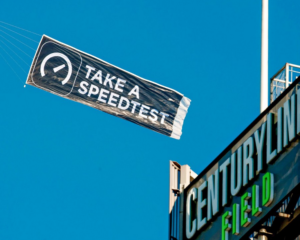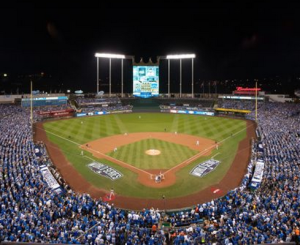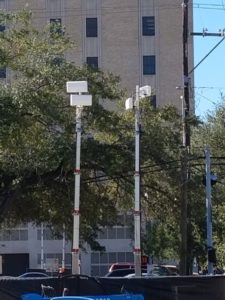
Nodes on wheels, or NOWs, provide extra coverage for Verizon Wireless in Houston for Super Bowl LI. Credit: Verizon Wireless
Last year at Levi’s Stadium in Santa Clara, Calif., Verizon beefed up its distributed antenna system (DAS) with under-seat antennas it designed specifically for use in stadiums. The idea of mounting antennas under seats, a growing trend in the stadium Wi-Fi world, is gaining traction as another method of bringing signals closer to fans, especially in places (like lower bowl seats) where there are no overhangs or other places to mount gear.
And while Verizon has been preparing for Sunday’s big game at NRG Stadium for years, that didn’t stop the company from “continually tweaking” its network preparations, according to Leo Perreault, executive director of network operations for Verizon’s South Central market, a region that stretches from west of Florida to Arizona, including Houston. In a phone interview this week, Perreault said that Verizon installed the under-concrete antennas during the middle of the 2016 football season, giving the company “some good experience” with the deployment ahead of Sunday’s game.
Under concrete = easier install and maintenance
It might not be well known outside of wireless networking circles, but signals will travel through concrete; many early stadium Wi-Fi designs (and some current ones, including a new network installed at the Pepsi Center in Denver) use antennas mounted under concrete floors, pointing up. Though fixed under-seat antennas can provide better coverage, Perreault said the ease of deployment made putting the additional DAS antennas underneath the floor a better option in Houston.“This way [under the concrete] is non-intrusive,” Perrault said, noting that the devices are also not affected by stadium power-washing units. The decision may have been influenced by the fact that NRG Stadium’s new Wi-Fi network had a big issue with moisture in under-seat AP placements, forcing a mid-season rip and replace for all the under-seat Wi-Fi APs.
Even though antennas under concrete are not as powerful, Perrault said Verizon is “very pleased with the performance. It’s a good compromise.”
Biggest stadium DAS?
Between the game being the Super Bowl and it being in Texas, there’s no shortage of hyperbole surrounding the game and all its attendant facets, including the network technology. But when Perreault claims that the DAS Verizon has installed for NRG Stadium “might be the largest we have anywhere,” that might be true since it also serves adjacent properties including the NRG Convention Center, the NRG Arena and an outdoor DAS in the surrounding spaces. In addition to Houston Texans games, NRG Park (which includes the stadium) is also host to the Houston Livestock Show and Rodeo, which humbly bills itself as the “world’s largest livestock show and richest regular-season rodeo.”
Inside NRG Stadium, Perreault said the new Verizon DAS (built before the 2015 season) has more than 900 antennas. As neutral host, Verizon will also provide access to AT&T and T-Mobile on its network; Sprint, which built a previous DAS at NRG, will continue to run on that system.Outside the stadium and around Houston, Verizon has done the usual big-event preparations, with lots of permanent and temporary macro network improvements, and portable units like COWs (cells on wheels) and smaller NOWs (nodes on wheels). You can review all the Verizon preparations in a company blog post.
As previously reported in MSR, Verizon also helped foot part of the bill for the new NRG Stadium Wi-Fi network, a deal that will give Verizon a reserved claim to 40 percent of the Wi-Fi network’s capacity, according to Perreault.
Whether or not Super Bowl LI breaks the wireless data consumption records set at last year’s game remains to be seen, but Perreault said there doesn’t seem to be any slowing down yet of the perpetual growth in wireless data use at stadiums, especially at big events like the Super Bowl.
“Fans just seem to find ways to consume whatever additional bandwidth you provide,” he said.
